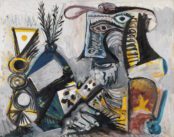My my, this is a prim piece of news.
First up, note that the research comes from Brigham Young University, the Utah-based seat of Mormon higher education. Far be it for we at Trebuchet to cast aspersions on the religious and ethical stance of our readers, or even those who aren´t our readers. Worship what you will, it's not our business. Nevertheless, there is something intriguing about a religion that forbids coffee, tea, beer and swearing, yet allows polygamy. Again, not a criticism or judgement on our part, just a slight awe at a lifestyle that allows multiple wives but not even a pub to get away from them.
That aside, you have to admire the tenacity of a researcher who can wade their way through the entirety of the Twighlight series and retain any sort of coherence after the event. We're sure we'd be, like, I mean, SOooo totally twisted by the deal? And you really, really have to give her credit for seeing the high word-count of books as being 'opportunities to swear'. Brilliant!
Foul-mouthed characters are rich, attractive and popular? Well gosh-darn them all to heck!
Bestselling authors of teen literature portray their more foul-mouthed characters as rich, attractive and popular, a new study finds. Brigham Young University professor Sarah Coyne analyzed the use of profanity in 40 books on an adolescent bestsellers list. On average, teen novels contain 38 instances of profanity between the covers. That translates to almost seven instances of profanity per hour spent reading.
Coyne was intrigued not just by how much swearing happens in teen lit, but who was swearing: Those with higher social status, better looks and more money.
"From a social learning standpoint, this is really important because adolescents are more likely to imitate media characters portrayed in positive, desirable ways," Coyne said.
Coyne's study will be published May 18 in the journal Mass Communication and Society.
While profanity in TV and movies has been studied extensively, this research is the first to examine it in the realm of books aimed at teens. Thirty-five of the 40 books – or 88 percent – contained at least one instance of profanity (one of them contained nearly 500).
That's a far higher rate than what's found in video games rated T (Teen), of which only 34 percent contain profanity. In a way, that's comparing apples to oranges because books contain more words –also known as "opportunities to swear" in the academic literature.
"Unlike almost every other type of media, there are no content warnings or any indication if there is extremely high levels of profanity in adolescent novels," Coyne said. "Parents should talk with their children about the books they are reading."
Source: Brigham Young University

The aim of art is to represent not the outward appearance of things, but their inward significance. – Aristotle















![L'Esprit comique [Der komische Geist], René Magritte, 1928. Courtesy Sammlung Ulla und Heiner Pietzsch, Berlin © 2025, ProLitteris, Zurich Photo Credit: Jochen Littkemann, Berlin](https://b276103.smushcdn.com/276103/wp-content/uploads/2025/07/ew11_0098489_2025-05-12_web-140x174.jpg?lossy=1&strip=0&webp=1)

